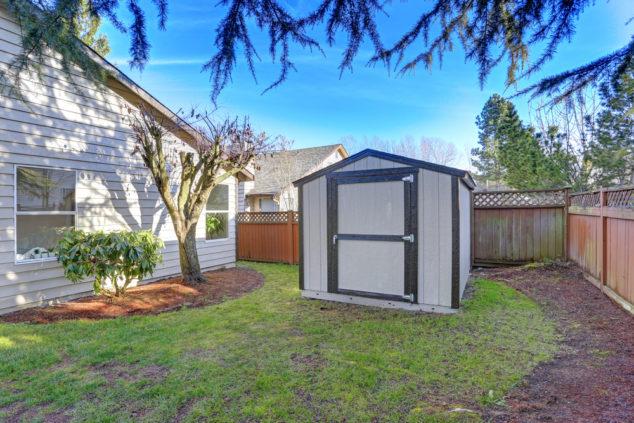A garden shed provides a secure storage place for your garden supplies, landscaping tools, lawn mower, generator, and other tools and equipment. That’s why you need to prepare your land and create a solid foundation to keep your shed sturdy and upright. A new shed can be an excellent investment, but it can cause problems if not built on level ground.

It’s crucial to prepare your land by choosing the right location and ensuring that the ground or shed base can support the weight of the shed to avoid leaning, cracking, or a total collapse. Check out the following steps below.
Step 1: Choose the Best Location
First and foremost, you have to contact the building inspector to know the specifics required for the proper location and good foundation of the garden shed. Your building inspector can help you in verifying the type of foundation and the specific building materials suitable for it. Also, check with the building inspector that the area selected meets code requirements.
Here are some tips when choosing the best location for your garden shed:
- Shed experts, like EasyShed, highly recommend choosing a spot that’s already level. In that way, you don’t have to deal with grading the soil.
- Don’t place your shed on a slanted area or a hill because it’s very difficult to tend the site, which might require using heavy machinery.
- Select a location that does not collect water to keep your storage shed dry. Avoid placing your shed with standing water because the water will eventually soften the soil and the weight of your storage shed will cause further shifting of the soil, causing major shed structural problems.
Step 2: Measure the Base Shed
Use wooden stakes to mark the area of your garden shed. You can find the measurements of your shed base usually on the side of the packaging. When you’re building a shed from scratch, think about the best measurements you need for your shed depending on the items you’re planning to store. Using a measuring tape, mark out the area on the ground and plant wooden stakes in all four corners.
Here’s how to measure the shed base:
- If your shed measures 20 ft (6.09 m) by 10 ft (3.05 m), measure the front part of the shed first. Plant the two stakes at either side of the 10 ft (3.05 m) measurement.
- Next, measure 20 ft (6.09 m) from both stakes and mark both spots with two more stakes.
- Use a string, twine, or fish line to join the stakes together. The string should be tightly and securely wrapped around the stakes at the same height to ensure no slack in the line.
Step 3: Clean and Level the Ground
Remove the grass where you’re planning to install the shed. You can pack the soil down using a tamper. Also, pour gravel in the area, at least 2 inches, to help the water drain underneath the storage shed. By doing so, the floor won’t become damaged or soggy.
Here’s how to level the ground:
- Remove the topsoil using a shovel. Topsoil is more brown and softer than other soil types, which can pose problems for your garden shed if not removed.
- Keep digging the topsoil and place it in a pile on one side until you notice a more solid soil that is lighter in color than the topsoil. At this point, you can stop digging the soil.
- Use a long plank to level the subsoil. Look at the plank and check if the subsoil is uneven.
- Lay the spirit level on top of the plank. The bubble found at the center of your spirit level will be inside the two lines if the spirit level is even. Move the soil until the ground is even.
- Repeat the process on the entire surface.
Step 4: Place Concrete Blocks
It’s now time to place concrete blocks in all corners of the garden shed. You can put extra blocks along the perimeter depending on your area’s building code. Never use hollow blocks to build the foundation for your storage shed because blocks are not sturdy enough to hold and support the shed. If you want to add value to your property, make your shed sturdy and functional, especially if you want to sell your home faster.
Step 5: Assemble the Floor of the Garden
You can now assemble the garden shed floor by fastening it into the posts. After which, you can assemble your storage shed following the instructions that came with the shed frame once the posts are level.
Conclusion
Preparing the placement site for a garden shed involves choosing the right area to avoid structural damage in the future, measuring and cleaning the shed base, and leveling the ground. Once the ground is clean and level, you can establish a solid concrete foundation and assemble the shed floor.





